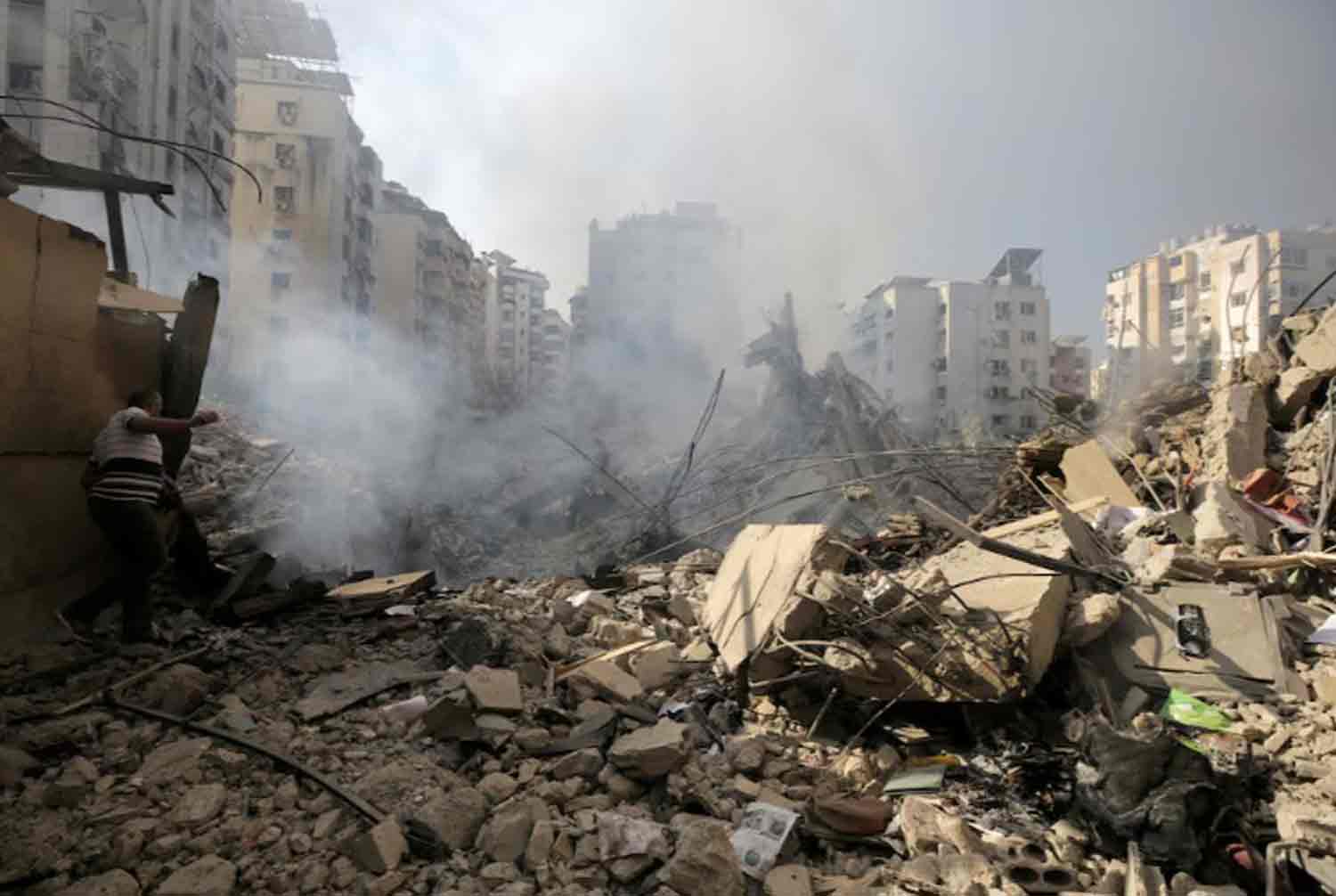Israeli Prime Minister Benjamin Netanyahu stated on Saturday that the assassination of Hezbollah leader Hassan Nasrallah represents a significant shift in the regional power dynamics that could last for years.
Netanyahu perceives this moment as a chance to fundamentally alter the power structure in the Middle East, believing that Hezbollah has been severely weakened. However, achieving total victory remains a challenge, and those who attain their goals may find themselves facing unforeseen consequences.
Since September 17, Israel has inflicted a series of devastating blows on the Iran-backed militant group in Lebanon, beginning with the destruction of communication devices, followed by a large-scale airstrike in southern Beirut that resulted in the death of senior commander Ibrahim Aqil and numerous civilians. This was succeeded by an intense bombing campaign that escalated over the following days. By Friday evening, when Nasrallah was killed in a bombing that destroyed several buildings, Hezbollah’s top leadership had been nearly eradicated.
Recent history provides harsh lessons for Israeli leaders and others who harbor ambitious plans for significant changes in Lebanon and the broader Middle East.
In June 1982, Israel launched an invasion of Lebanon aimed at dismantling the Palestinian Liberation Organization. Additionally, it sought to create a pliable Christian-led government in Beirut and to expel Syrian forces from the nation.
The outcome was a failure on all fronts. While Palestinian armed factions were indeed forced to leave Lebanon through an American-mediated agreement that relocated them to Tunisia, Yemen, and other locations, the objective of suppressing Palestinian national aspirations alongside the PLO was not achieved. Just five years later, the First Palestinian Intifada erupted in Gaza and spread to the West Bank. Today, Palestinians remain as resolute and restless as ever in their opposition to Israeli occupation.
Bashir Al-Gemayel, a Maronite Christian militia leader and Israel’s primary ally in Lebanon during the invasion, was elected by parliament but was assassinated in a large explosion in east Beirut before he could assume office. His brother, Amin, succeeded him, and under his leadership, with substantial American support, Lebanon and Israel reached an agreement in May 1983 to establish normal bilateral relations. However, the government faced fierce opposition and collapsed the following February, leading to the agreement’s cancellation.
Following the September 1982 Sabra-Shatila massacres, the United States deployed troops to Beirut but withdrew after its embassy was bombed twice, along with attacks on US Marines and French military barracks in October 1983.
The Lebanese civil war reignited and continued for over six years.
Syrian forces, which had entered Lebanon in 1976 as a “deterrence force” under an Arab League mandate, remained until 2005, following the assassination of former Prime Minister Rafiq Al-Hariri.
One of the most significant consequences of the 1982 Israeli invasion was the emergence of Hezbollah, which engaged in a persistent guerrilla campaign that ultimately forced Israel to withdraw unilaterally from southern Lebanon. This marked the first and only instance of an Arab military force successfully compelling Israel to retreat from Arab territory. With support from Iran, Hezbollah proved to be far more formidable and effective than the Palestinian militants that Israel had previously expelled.
Hezbollah subsequently fought Israel to a stalemate in the 2006 war and continued to strengthen in the years that followed, bolstered by significant Iranian assistance.
Hezbollah currently finds itself weakened and disorganized, with evident infiltration by Israeli intelligence; however, it would be hasty to declare its end.
The 2003 US-led invasion of Iraq serves as a cautionary tale about the dangers of unchecked arrogance. As the Iraqi military disintegrated and American forces advanced toward Baghdad, the George W. Bush administration harbored illusions that Saddam Hussein’s downfall would trigger the collapse of governments in Tehran and Damascus, leading to a surge of liberal democracies throughout the region.
In reality, the US occupation of Iraq spiraled into a horrific cycle of sectarian violence, costing the US dearly in both lives and resources, while the Iraqi populace suffered even more. The execution of Saddam Hussein enabled Iran to extend its influence deep into Baghdad’s political landscape. Meanwhile, Al-Qaeda, which had been weakened by the US invasion of Afghanistan, found new life in Iraq’s Sunni regions, eventually evolving into the Islamic State in both Syria and Iraq.
As I observe the smoke rising from Beirut’s damaged southern suburbs, I am reminded of Condoleezza Rice’s remarks during the 2006 Israel-Hezbollah conflict, when she described the chaos and devastation as “the birth pangs of the new Middle East.”
Be cautious of those who herald a new beginning, the emergence of a new Middle East, or a redefined balance of power in the region. Lebanon exemplifies the potential pitfalls; it is a testament to the perils of unintended consequences.
Discover more from Defence Talks | Defense News Hub, Military Updates, Security Insights
Subscribe to get the latest posts sent to your email.




